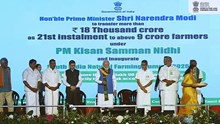
As the global population grows and climate pressures intensify, the world faces a dual challenge: ending hunger while reducing agriculture’s environmental footprint. In the latest OECD-FAO Agricultural Outlook 2025–2034, a thought-provoking scenario outlines a path where the world can simultaneously eradicate undernourishment and reduce direct agricultural greenhouse gas (GHG) emissions by 7% from current levels by 2034. While ambitious, the Outlook details a realistic roadmap involving the scaling of emissions-reduction technologies and increasing agricultural productivity by 15%.
10% Production Hike and Technology Adoption: Prescription
The report stresses that achieving this vision demands a 10% increase in global food production over the next decade. This would be driven by widespread deployment of innovative technologies, including precision farming tools, improved nutrient and water management, enhanced feed practices, and regenerative solutions such as composting and intercropping.
Emissions Reduction Technologies (ERTs): Core Enablers
Key emissions-reduction technologies (ERTs) highlighted in the Outlook include methane-inhibiting livestock feed additives, AI-driven crop diagnostics, and low-cost conservation techniques. These solutions offer the potential to significantly cut emissions intensity while boosting yields.
Global Disparities in Implementation
Despite the promise, implementation remains uneven. Many low- and lower-middle-income countries in Africa and South Asia lack access to capital, advanced infrastructure, and extension services necessary to adopt these technologies. This gap risks deepening food insecurity and environmental degradation in vulnerable regions.
Structural Barriers and Policy Inertia
The Outlook points out systemic barriers, such as inefficient subsidy structures, limited access to credit, and fragmented markets, that slow down innovation. Policy inertia in integrating sustainability with food security goals remains a major challenge.
OECD and FAO experts emphasize the need for international funding, public-private partnerships, and inclusive knowledge transfer frameworks. Only by harmonizing global, regional, and local efforts can we realistically aim for zero hunger while meeting sustainability targets.















